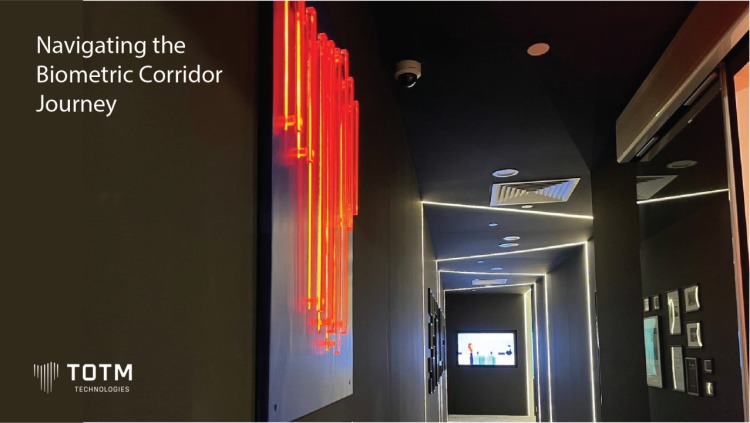
The ‘next big thing’ in travel and border technology shows the transformational power of biometrics-bound digital identity solutions.
It’s that time of year when much of the northern hemisphere flocks to airports for peak holiday travel season, kicking off what airlines expect to be a record year for traveler numbers and revenues.
In some parts of the world, travelers may notice revamped and upgraded airport experiences. One of the newest and most interesting concepts gaining traction in that regard is the biometric corridor, in which passengers experience an entirely contactless travel experience across borders by using biometrics authentication to bypass long lines and physical document checks.
Elevating travel experiences with biometric solutions
Spurred on, in part, by the “contactless” operational imperatives and traveler expectations that became the norm during the pandemic, biometric corridors represent the travel and airline industry’s re-architecting of travel experiences in an effort to increase security and introduce a seamless user experience for passengers.
The contactless biometric corridors that have been piloted over the past few years are prioritising convenience, a user-friendly experience and more efficient passenger throughput – all packaged as ‘frictionless travel’ – without sacrificing security.
For example, Dubai International Airport has installed SmartGates in its Terminal 3 whereby guests can “go through passport control in a matter of seconds” via a new contactless process. Trials of new e-gates in UK airports are set to begin this year allowing arrivals into the country using only facial recognition. And the Australian government is planning to upgrade its major airport with biometric cameras to replace the manual passport check with biometric solutions like facial capture and passport comparisons.
The biometric corridor process
I experienced a version of the biometric corridor on Christmas Eve when I traveled to the US via Narita airport (which offers ‘Face Express’ for biometric check-in and boarding, though I didn’t use it).
When arriving at DFW airport I was directed to the same entry lane used for Mobile Passports, and passing through immigration I had no contact with an immigration officer, I never had to produce a physical travel document, and I was able to enter the country on the basis of biometric facial recognition. I have to say it was one of the quickest and easiest international arrivals I’ve had in a long, long time.
We can expect an expansion of these types of biometric solutions as the pilots expand and migrate to full implementations.
Contactless biometrics authentication and verification
We’re already seeing the precursor to these corridors in the form of e-Gates, where passengers scan their physical passports themselves for identity authentication, without the need for a border official to do the scanning.
Biometric corridors go a step further, in that passengers don’t have to present or scan a physical passport – instead, their biometrics will be used as the ultimate authentication vector.
For most of these biometric solutions, it is necessary for travelers to apply in advance, perhaps download an app, and submit details for electronic travel authorisation prior to traveling. And then, beginning their journey at check-in, and moving through security and immigration, it will eventually be possible for travelers to go from country to country completely on the basis of biometrics authentication and verification.
Challenges of Biometrics Authentication
While biometrics authentication methods are recognised as highly fraud resistant, and therefore can contribute to safer and more secure travel environments, there is still plenty of room for debate and discussion on the collection and storage of biometric data as it flows through a digital network such as a biometric corridor.
For many, there is still a fair amount of apprehension – some warranted, some less so – about biometrics and the security of their personal information, especially in regards to a data breach or misuse of biometric data. So all biometric solutions must prioritise privacy, civil rights, and civil liberties.
Overall, contactless biometric corridors offer a very compelling list of benefits, combining the convenience of contactless technology with the security of biometrics, and we can expect to see more and more implementations in different cross-border travel environments in the near future.
BY ERIC DRURY, Digital Identity & Trust Advisor

